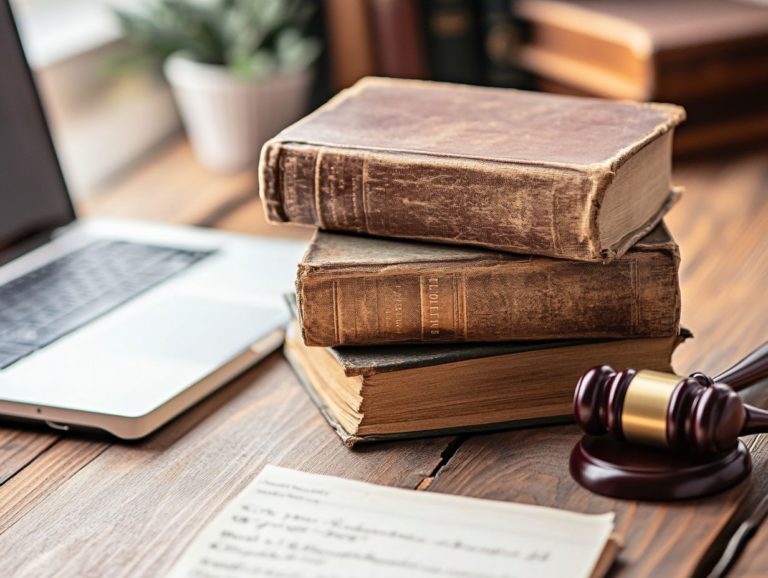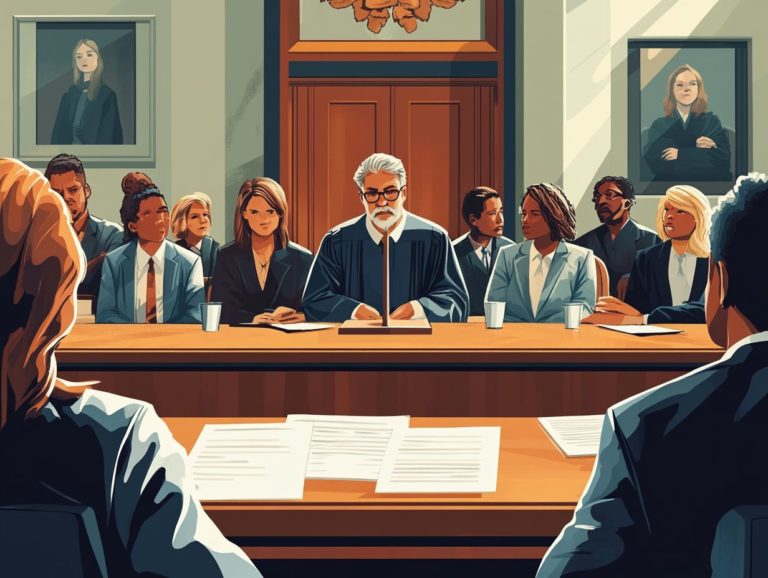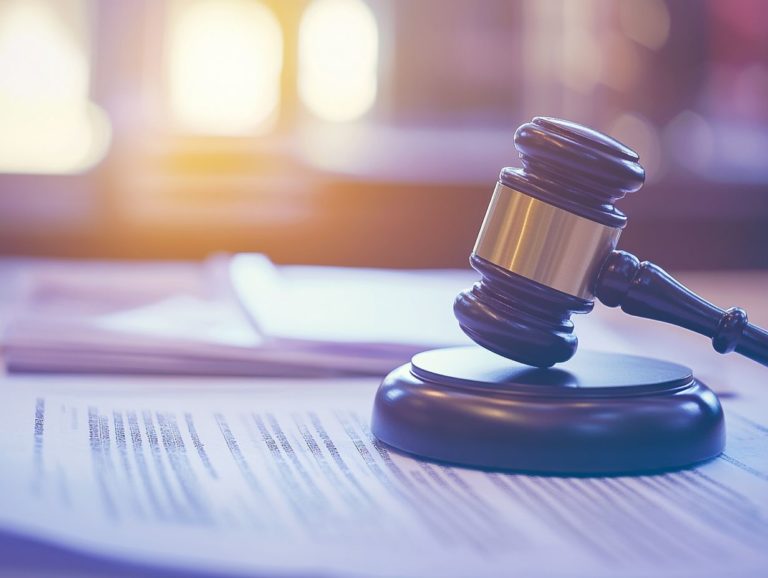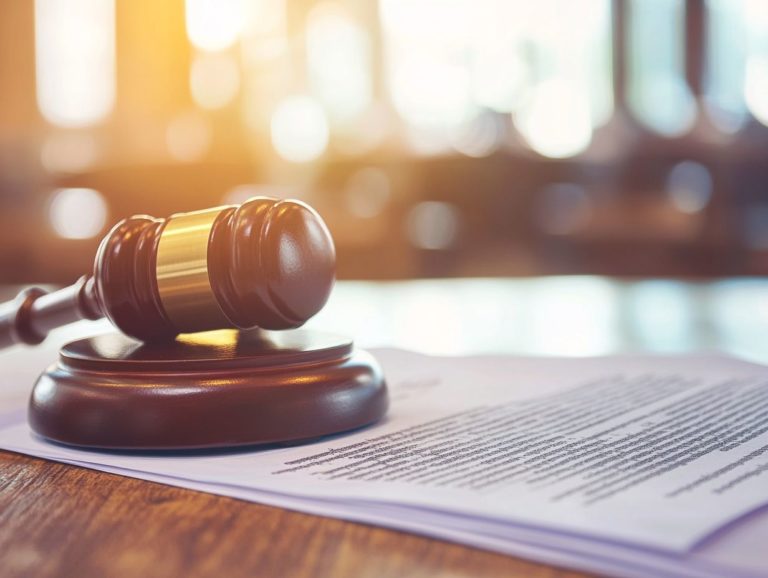Understanding the Discovery Process in IP Litigation
Intellectual property litigation presents a complex landscape where innovation protection meets the legal system.
The discovery phase is crucial. It involves gathering vital information and evidence.
This article breaks down IP litigation and explains discovery, including types like document requests, interrogatories (written questions that must be answered under oath), and depositions (sworn testimony taken outside of court).
It also addresses the challenges faced and strategies to master this critical stage. Immerse yourself in this exploration to deepen your understanding of how discovery influences the dynamics of IP disputes.
Contents
- Key Takeaways:
- Overview of IP Litigation
- The Discovery Process
- Types of Discovery
- Key Players in the Discovery Process
- Challenges and Strategies in Discovery
- Frequently Asked Questions
- What is the discovery process in IP litigation?
- Why is the discovery process important in IP litigation?
- What are the different methods of discovery in IP litigation?
- How is the discovery process initiated in IP litigation?
- How is the discovery process initiated in IP litigation?
- Can the discovery process be limited in IP litigation?
- How long does the discovery process typically last in IP litigation?
Key Takeaways:

Mastering the discovery process is essential to winning your case!
The discovery process is a crucial part of IP litigation, and understanding what to expect during an IP litigation process can help parties effectively gather evidence and build their case.
Types of discovery methods include interrogatories, document requests, and depositions, each serving a specific purpose in uncovering relevant information.
Effective communication and strategic navigation of complexities and objections are key to a successful discovery process in IP litigation.
Overview of IP Litigation
Intellectual Property (IP) litigation, especially patent litigation, is a specialized area of law that centers on the enforcement and defense of patents key assets for numerous businesses.
This type of litigation involves a diverse range of legal arguments and strategies. Parties often embark on extensive discovery processes to collect vital evidence.
The objective is to prepare meticulously for trial while tackling intricate issues surrounding patent validity and infringement.
Understanding the details of litigation strategy is crucial for effective case preparation and achieving favorable outcomes.
What is Intellectual Property Litigation?
Intellectual Property Litigation encompasses legal disputes surrounding ownership and rights tied to intellectual property, primarily involving patents, trademarks, and copyrights.
Patents shield inventions and new processes; trademarks protect brand identifiers like logos and slogans; and copyrights grant creators control over their artistic works.
The significance of safeguarding these rights cannot be overstated; they nurture innovation and creativity, enabling inventors and artists to enjoy the fruits of their labor.
As you navigate these intricate legal waters, it s crucial to recognize how enforcement actions can deter infringement, ensuring you maintain a competitive edge in the marketplace.
The Discovery Process
The discovery process in litigation is a pivotal phase where you and opposing parties exchange pertinent documents and information. This lays the groundwork for building your cases effectively.
This phase involves careful evidence gathering and document production. It may include sworn testimony, interrogatories, and subpoenas to key individuals who hold essential information.
Understanding the intricacies of the discovery process is vital for fostering effective collaboration within your legal team and ensuring strategic foresight during case preparation.
Definition and Purpose
The discovery process is an important pre-trial phase in litigation where you and the other parties gather and exchange evidence to prepare for trial.
During this critical stage, your attorneys work to uncover essential facts and information that could sway the outcome of your case. This involves obtaining documents, testimonies, and various forms of evidence from the opposing side, all of which inform your litigation strategy.
By meticulously analyzing the materials exchanged, your legal team can identify strengths and weaknesses, anticipate counterarguments, and fine-tune your position for negotiations or courtroom presentations.
The effectiveness of this exchange can significantly impact settlement discussions, potentially leading to terms that are much more favorable for you.
Types of Discovery
During litigation, you will encounter various types of discovery, including document requests, interrogatories, and depositions.
Each of these tools serves a specific purpose in the meticulous process of evidence gathering, helping to build a comprehensive case.
Don t navigate these waters alone consult an expert to strengthen your case!
In conclusion, the discovery process is a vital component of IP litigation that can shape the outcome of your case. Understanding the role of the court in IP litigation and mastering this process can provide you with a significant advantage.
Interrogatories
Interrogatories are formal questions that lawyers send to the opposing party, requiring them to provide detailed responses. These important tools are essential in the discovery process, enabling attorneys to extract crucial information that can shed light on the facts and bolster their case.
By carefully crafting these questions, your legal team can identify inconsistencies in the opposing party’s narratives. This allows for a more strategic approach to litigation.
The responses you obtain through interrogatories not only help shape your legal arguments but also serve as valuable reference points during potential settlement negotiations. In this way, well-prepared interrogatories can significantly sway the outcome of a case, making them a critical element of a robust legal strategy.
Document Requests
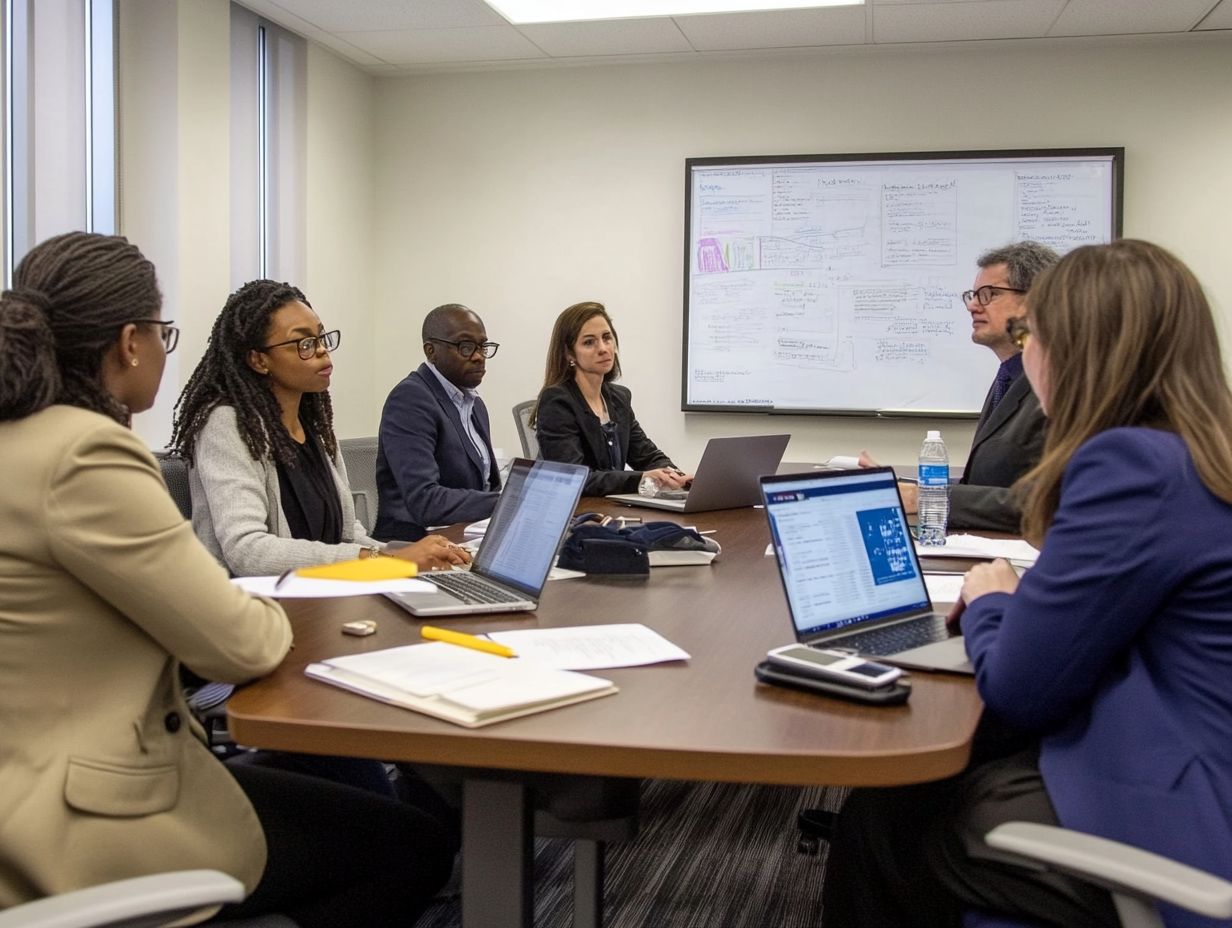
Document requests are formal inquiries you make to another party, asking for specific relevant documents related to your case. These requests are critical! They help you gather the evidence you need to support your case.
Typically, the documents you might request can include:
- Contracts
- Emails
- Reports
- Financial statements
Each type of document holds its own significance, illuminating different facets of your case. For instance, emails can unveil communications that reflect intentions or agreements. Financial documents may help uncover hidden assets or liabilities.
Understanding how to navigate the process of making these requests is essential. You ll need to adhere to the procedural rules and timelines set by the court to ensure everything runs smoothly.
Depositions
Depositions play a pivotal role in the discovery process, allowing witnesses to provide sworn testimony under oath that can serve as evidence in court. This procedure captures vital facts and insights.
They encourage collaboration among legal teams, enabling them to share information, pinpoint inconsistencies, and strategically develop their cases based on the statements gathered. The deposition process ultimately enhances the effectiveness of litigation, producing a comprehensive record that informs all subsequent legal actions.
Key Players in the Discovery Process
Understanding who s who is crucial. The key players include the plaintiff and defendant, along with their respective attorneys. Expert witnesses also step into the spotlight, playing vital roles in gathering evidence and articulating legal arguments that can shape the case’s outcome.
Plaintiff and Defendant
The plaintiff is the party kicking off the lawsuit, while the defendant finds themselves on the receiving end. Both hold pivotal roles throughout the litigation journey, particularly during the discovery phase.
During this stage, you, as the plaintiff, are responsible for gathering the evidence that will bolster your claims. This may involve compiling documents, creating witness lists, and crafting interrogatories. This strategic maneuver lays a solid foundation for your case.
On the flip side, the defendant must carefully scrutinize the evidence you present and respond appropriately. This often means producing their own documents and evidence to challenge your arguments.
Clear communication and a thorough understanding of procedural rules are vital for both parties as you navigate the intricate landscape of discovery in your pursuit of truth and justice.
Attorneys
Attorneys act as your legal representatives, whether you are a plaintiff or defending against a claim. They create strong legal arguments that can make a difference in your case and implement effective planning for a court case during the critical discovery phase.
In this crucial stage, they carefully plan how to gather essential information and evaluate the evidence presented by the opposition. Their expertise ensures adherence to procedural rules while protecting your interests.
Through thorough evaluations, they identify which documents, depositions, and written questions could reveal significant insights or strengthen your case. With a keen awareness of potential legal implications, these professionals anticipate the tactics of the opposing side, enabling them to respond effectively and build a persuasive narrative.
Ultimately, skilled attorneys defend your rights and enhance the overall effectiveness of the legal process.
Expert Witnesses
Expert witnesses are specialized professionals who provide invaluable technical insights and opinions, playing a crucial role in supporting your legal team with evidence gathering and case preparation.
Their expertise spans various fields, from medicine to engineering, equipping them to clarify complex subjects that may be challenging for laypersons to grasp.
By breaking down intricate information into simple terms, these professionals highlight essential aspects of your case and improve the overall quality of the evidence presented.
As credible authorities, they stand firm under rigorous cross-examination, bolstering the integrity and persuasive power of your case in the eyes of the judge or jury.
Their detailed assessments not only shape your strategies but also foster transparency, guiding all parties through the complexities of the legal process.
Challenges and Strategies in Discovery
Navigating the discovery process can be challenging for legal teams. You must manage privilege issues, address disputes, and ensure comprehensive document preservation. Each aspect requires careful attention to detail and strategic planning to effectively safeguard your client’s interests.

Navigating the complexities of the discovery process often requires managing objections related to privileged communications and other potential disputes. If these challenges are not addressed properly, they can lead to significant delays and increased litigation costs. For instance, when a party claims attorney-client privilege, intense debates can arise over which documents are genuinely protected.
To handle these objections effectively, you can adopt clear communication strategies, conduct thorough privilege reviews, and maintain proper documentation throughout the process.
Establishing early guidelines for discovery can also be beneficial, minimizing misunderstandings and facilitating smoother exchanges. By proactively addressing these complexities, you can reduce disputes and promote a more streamlined discovery experience.
Frequently Asked Questions
What is the discovery process in IP litigation?
The discovery process is the phase of a lawsuit where both parties gather and exchange evidence and information related to the intellectual property (IP) at the center of the dispute. For those involved, it’s crucial to understand the trade secret litigation process, which can include documents, electronic data, witness statements, and expert opinions.
Why is the discovery process important in IP litigation?
The discovery process allows both parties to gather evidence and build their case. It also ensures that all relevant information is disclosed, promoting fairness and transparency. Understanding key factors in IP litigation is crucial, as without discovery, it would be challenging to prove or defend against claims of IP infringement.
What are the different methods of discovery in IP litigation?
The most common methods of discovery in IP litigation include document requests, depositions, written questions, requests for admission, and subpoenas. Each method has its own benefits and limitations, and they may be used together to gather as much evidence as possible.
How is the discovery process initiated in IP litigation?
The discovery process is typically initiated by a formal request from one party to the other, outlining the specific information and documents needed to support the case.
Act quickly to protect your rights during discovery!
How is the discovery process initiated in IP litigation?
The discovery process starts after the complaint is filed and the defendant has responded. During this time, both parties exchange basic information and discuss a plan for discovery. If they can’t agree, the court will step in and issue a discovery order.
Can the discovery process be limited in IP litigation?
Yes, there are limits on the discovery process in IP cases. The court may restrict the scope to only what is relevant and set limits on the number of requests or depositions each party can make.
How long does the discovery process typically last in IP litigation?
The length of the discovery process varies. It can take months or even years, depending on the case’s complexity and how willing both parties are to cooperate. The court can set deadlines to keep things moving swiftly!



